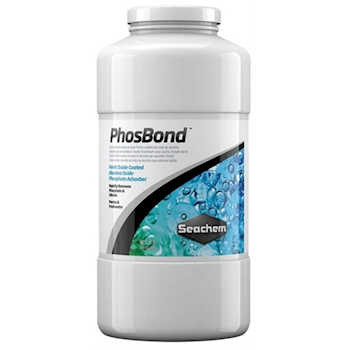Seachem PhosBond 4 Liters.
Seachem’s PhosBond revolutionizes phosphate and silicate removal through a synergistic fusion of granular ferric oxide (GFO) and aluminuum oxide. This synergistic blend combines the best of both types of phosphate removers to deliver a high capacity media that will rapidly remove phosphates and silicates. Its high porosity and surface area give it a large binding capacity, while its physical strength and integrity assures that it will not break down from mechanical stress, making it a perfect media for operating in media reactors.
Features
- Rapidly removes phosphate & silicate
- Ferric oxide coated aluminum oxide phosphate adsorber
- High porosity and surface area give it a large binding capacity
Available Sizes
- 100 ml.
- 500 gr.
- 1 Liter.
- 4 Liters.
Directions
- For best results, PhosBond should be rinsed before use and placed so as to maximize the flow of water through it but not so that it tumbles against itself in flow. It may be used in a canister filter, media chamber, box filter, or any high flow area of a trickle filter.
- Place in a media reactor or filter media bag.
- Use 60 mL (1/4 cup) for every 200 L (50 US gallons) saltwater or 400 L (100 US gallons) freshwater.
- Leave product in place for 4 days, then test phosphate or silicate concentrations.
- If the concentration of the component you are trying to decrease has not dropped to around 0.02 mg/L, then replace the PhosBond, otherwise leave in place until levels begin to climb again.
- As long as concentrations remain under control, the product is not exhausted. Over treating is not recommended. PhosBond is not an exchange resin and does not release anything into the water. It does not leach phosphate or silicate back into the water and may be removed, dried, and returned to service until exhausted. Continuous use of small quantities is better than intermittent use of larger quantities.

















